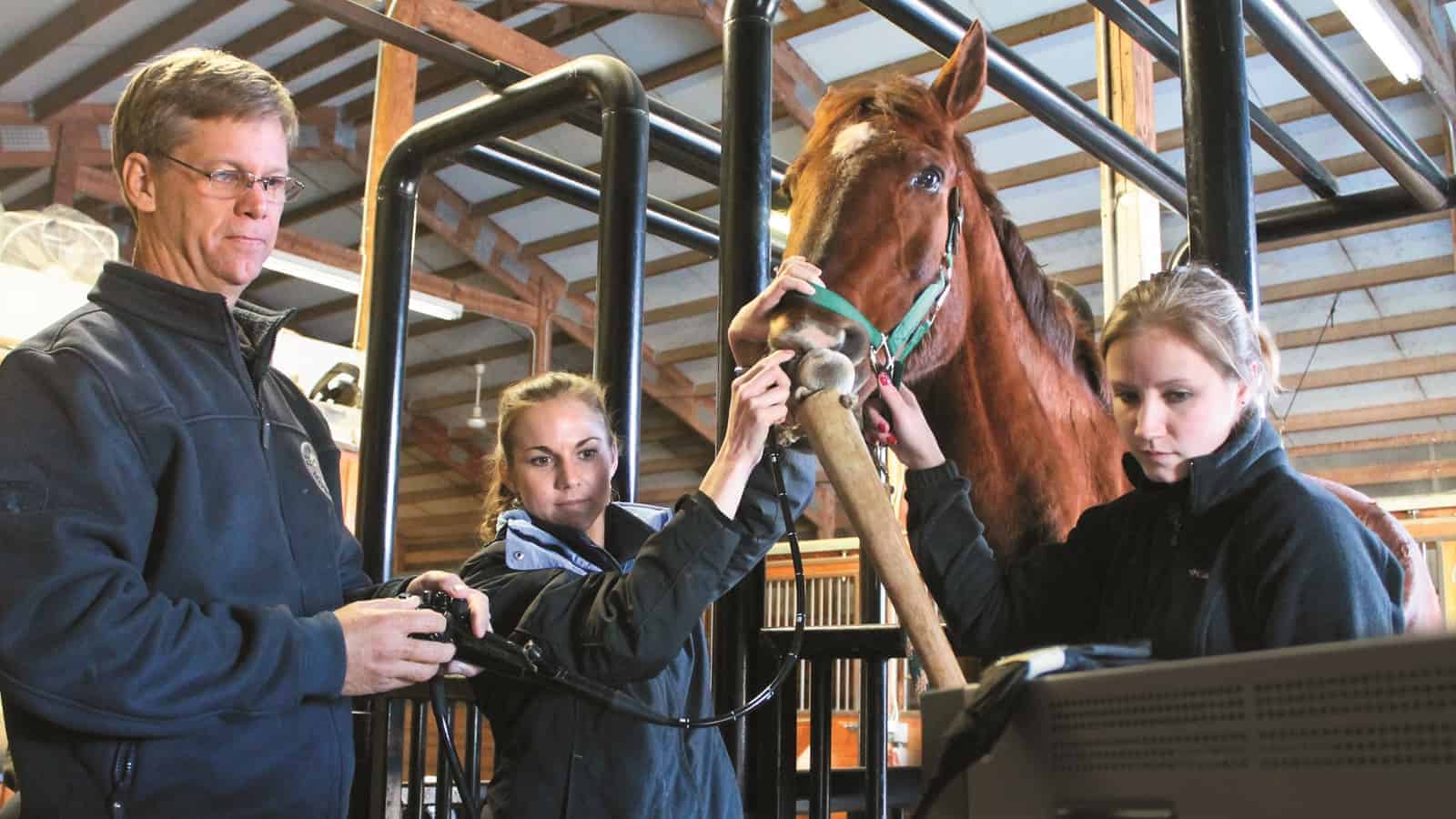Not Your Average Equine Ulcer
- Topics: Article, Digestive Tract Problems, Horse Care, Nutrition, Ulcers

What scientists are learning about the recently defined equine glandular gastric disease
Gastric ulcers are nearly ubiquitous in our domestic equine population. We know they plague anywhere from 50% to 90% of horses, particularly performance horses. But not all ulcers are created equal. In the past few years researchers officially split gastric disease into two categories: squamous, affecting the upper portion of the horse’s stomach, and glandular, a nonulcerative condition affecting the lower. Gastric disease develops most commonly in the squamous region, when stomach acid splashes onto that vulnerable area of tissue. Why it develops in the glandular region—and how to prevent and treat it—is less clear.
At the 2018 British Equine Veterinary Association Congress, five researchers discussed what we do know about equine glandular gastric disease (EGGD). Here are their key takeaways.
Signs Your Horse Might Have EGGD
The typical clinical signs of equine squamous gastric disease (ESGD—just remember, S for squamous upper, G for glandular lower) are well-recognized. They include poor performance, attitude changes, weight loss, poor appetite, poor hair coat, and low-grade colic (abdominal pain/discomfort), among others TheHorse.com is home to thousands of free articles about horse health care. In order to access some of our exclusive free content, you must be signed into TheHorse.com. Already have an account?Create a free account with TheHorse.com to view this content.
Start your free account today!
and continue reading.

Written by:
Alexandra Beckstett
Related Articles
Stay on top of the most recent Horse Health news with












